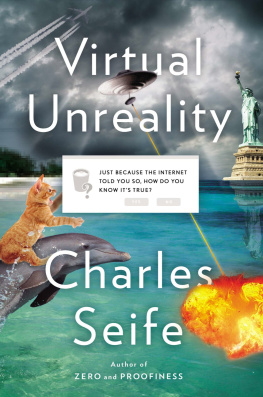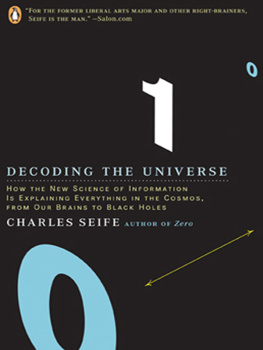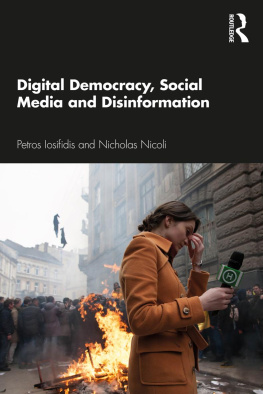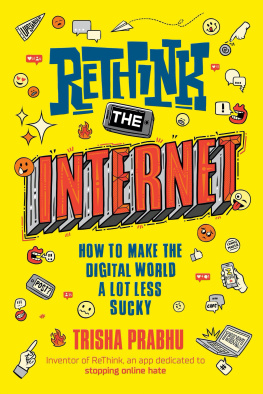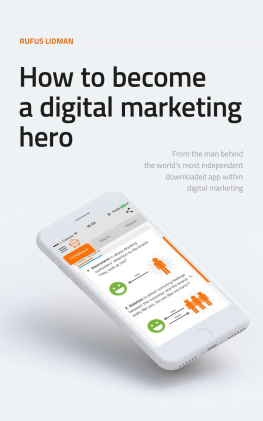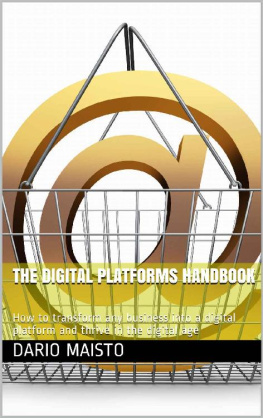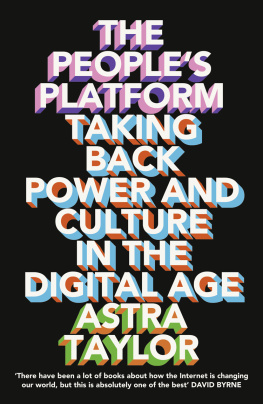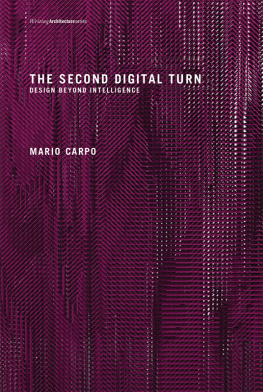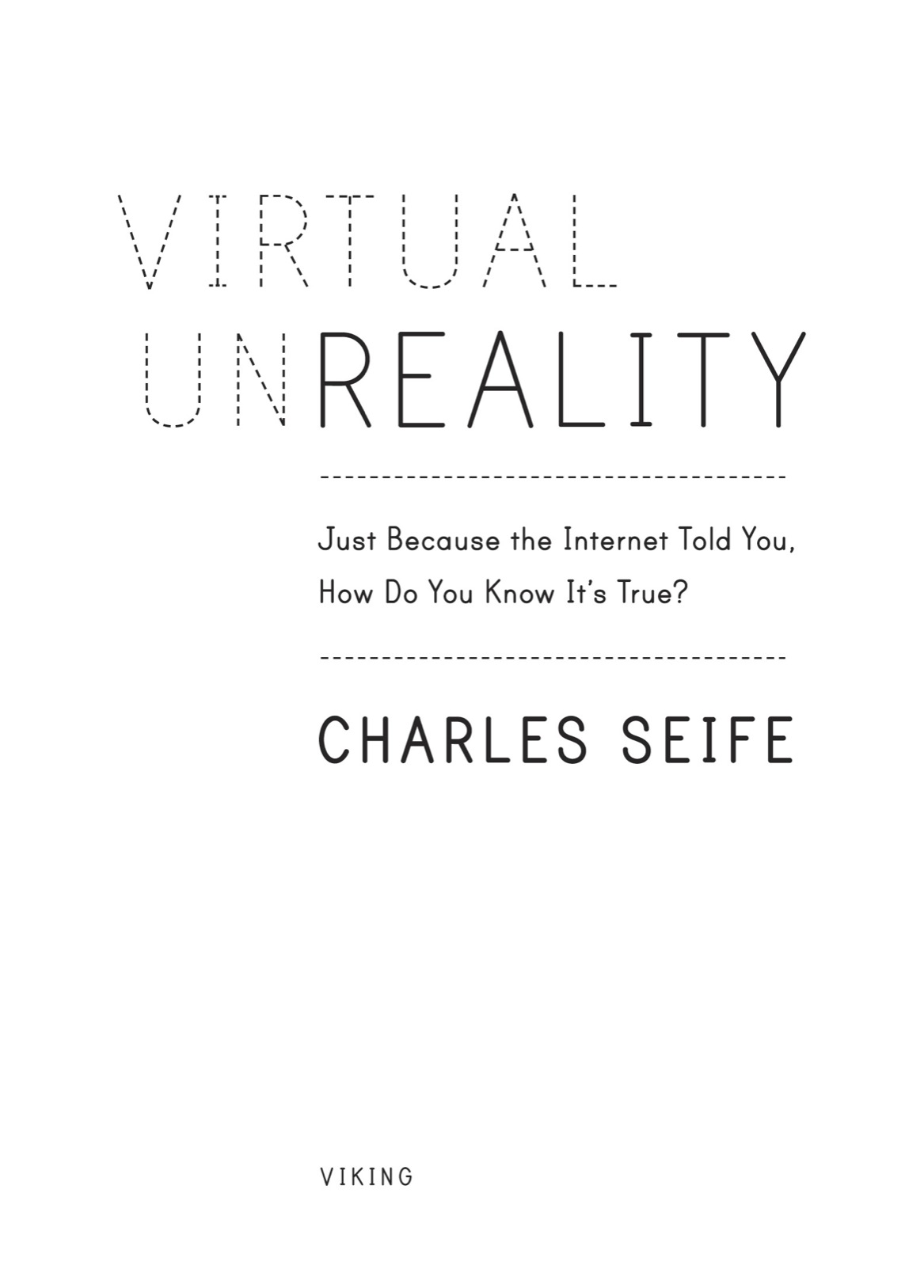USA | Canada | UK | Ireland | Australia | New Zealand | India | South Africa | China
Penguin supports copyright. Copyright fuels creativity, encourages diverse voices, promotes free speech, and creates a vibrant culture. Thank you for buying an authorized edition of this book and for complying with copyright laws by not reproducing, scanning, or distributing any part of it in any form without permission. You are supporting writers and allowing Penguin to continue to publish books for every reader.
While the author has made every effort to provide accurate telephone numbers, Internet addresses, and other contact information at the time of publication, neither the publisher nor the author assumes any responsibility for errors or for changes that occur after publication. Further, publisher does not have any control over and does not assume any responsibility for author or third-party Web sites or their content.
INTRODUCTION:
VIRTUAL UNREALITY
The new environment shaped by electric technology is a cannibalistic one that eats people. To survive one must study the habits of cannibals.
MARSHALL MCLUHAN
O n October 5, 2001, the world learned what evil can lurk in the heart of a Muppet.
, in Dhaka, at an anti-American rally. He was in the background, almost hidden from view, but there was no question: it was his unmistakable visage, jaundiced and unibrowed, glowering angrily over the right shoulder of enemy number one. The next sighting was in Djakarta, Indonesia. Again, he was hard to pick out at firstcameramen from Reuters and the Associated Press didnt even notice him in their photographs for a few daysbut there he was, directly behind the figure of Osama bin Laden. It was Bert, pointy-headed resident of Sesame Street, roommate of Ernie, pigeon fancierand apparently right-hand man to the most important and most violent terrorist of modern times.
The image was everywhere. Furious mobs, chanting and shouting, bore the photograph of bin Laden and his fuzzy yellow henchman on posters and placards. , he said. We have very strict editing guidelines.
Berts corporate masters were furious about Berts appearance at proAl Qaeda rallies.
The man most responsible, Dino Ignacio, wasnt ashamed. He was terrified.
Since the late 1990s, Ignacio, a California-based artist, had run Bert Is Evil, a mildly amusing surrealist website of the kind that proliferated in the early years of the internet. The site portrayed the ill-tempered Muppet as a malevolent Forrest Gump, quietly present in the background at darker moments in human history. Ignacio digitally altered photographs to create a photographic record of his evil influence, such as a black-and-white shot of the Muppet sitting casually beside Adolf Hitler; a fuzzy Zapruder still where, barely visible, he lurks in the crowd; mugging for the camera along with O. J. Simpson. As Bert Is Evil grew a small cult following, fans created reams more photographic evidence. Bert squatting next to Pol Pot, Bert handing out Kool-Aid at Jonestown, Bert with Slobodan Milosevic, Bert with Joseph Stalin, with Saddam Hussein, with Robert Mugabe, with Ayatollah Khomeini.
And with Osama bin Laden. In the photo, Bert wears a ribbed white turtleneck and a windbreaker, and stares at the camera from a place of pride directly behind Osama bin Laden. Brows knitted, he grins evilly. The Muppet is clearly in his element.
Then September 11 happened. Bin Laden and Al Qaeda became symbols of resistance to the United States. Anti-American protesters around the world displayed his face on placards. And for their (suddenly very profitable) protest-placard business, they found the one with Bert. Apparently, nobody seemed to think it odd that the terrorist mastermind had a Muppet henchman, so they slapped it on their latest placard design. From there, it was only a matter of hours before the photo was everywhere, in the hands of angry demonstrators seeking to glorify the name of Osama bin Laden.
The news shot round the world in an instant. Bert really was in the company of terrorists. It was as if Ignacios imagination had suddenly transformed itself from fantasy to reality. Bert really was now the most evil puppet on the face of the planet. and I choose to be responsible enough to stop it right here.
Of course, he couldnt. Nobody could. The photograph had gone global, and no power on earth could possibly remove it from circulation, unpublishing what had been published. And this was part of what spooked Ignacio. It was a queasy feeling that he had subtly altered the fabric of reality. There it was in the newspapers: Bert, grinning, his portrait carried by a crowd vowing to destroy America. It started off as a joke, a whimsical ideaand somehow pure thought had crystallized and become real.
-----
Digital information is different.
The switch to digital information is a revolution as important as the advent of the printing press. On one level, theres no difference in content between a printed book and an e-book, a handwritten sheet of paper and a scanned PDF, an old photograph and a digital image, an old celluloid copy of Casablanca and one on DVD. The information contained in those different media assaults our senses in roughly the same way; if done well, the digital is all but indistinguishable from the analog. But theres still a difference.
Digital information is a break from everything weve known before because it has a combination of physical properties shared by no other form of information. It can move around the world at the speed of light. It can be stored in virtually no space at all without fear of decay or degradation. It can be copied with perfect fidelity at almost no cost. All media, be it print, visual, audio, or something else, can be processed by a computer sophisticated enough and can be stored in essentially identical devices. At first glance, these properties might not seem that important, much less revolutionary. But by looking at the field of epidemiology, we can see that these very properties make digital information a superbug of the mind, something that spreads unbelievably rapidly, infects all corners of society, and becomes all but impossible to control. When we learned to turn all of our information into bits and bytes, we unleashed an entirely new creature upon the world, one whose powersand dangerswe only dimly understand. The digital medium is changing the way we interact with the world.
In some ways, it is akin to the birth of genetic engineering. In the past three decades, weve designed tools that allow us to remove, insert, and delete bits of code from the genomes of living organisms. By exploiting some of the peculiar and seemingly contradictory properties of DNA and RNAsuch as their ability to replicate over and over nearly error free while, at the same time, being extremely susceptible to errors inserted by lab techniciansweve learned to alter our very biology. For better or for worse, weve become genetic engineers.

